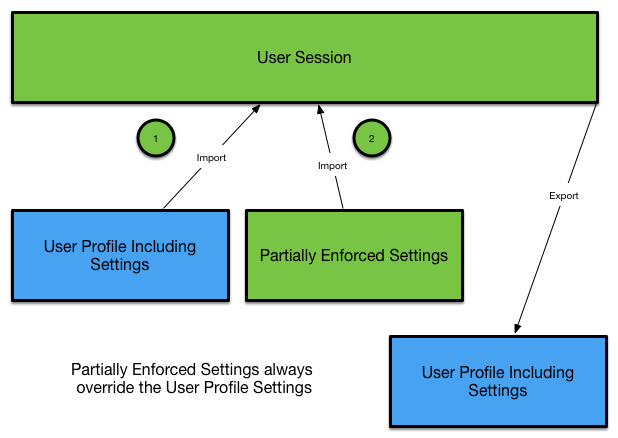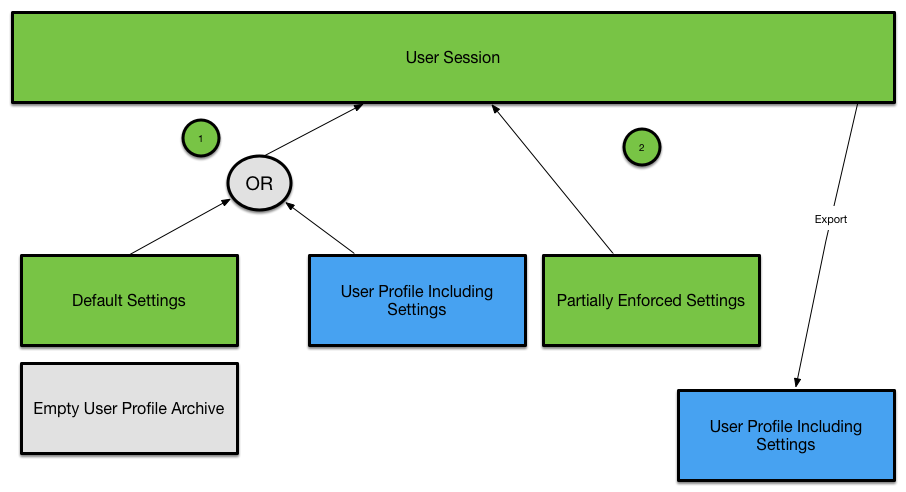The power within User Environment Manager (UEM) aligns with its ability of being able to create a managed personalized environment for the end-user (even/especially in a floating environment where no one has a dedicated virtual desktop).
One great feature to increase the productivity of the user is been implemented by having multiple and different pre-defined settings applied to a Window setting or application based on certain conditions.
### Check my further readings ########################
- My Installation and Troubleshooting guide
- My opinion about Virtualized Desktop Infrastructure (VDI) in the year 2016
- UEM Collection (Update, Troubleshooting, Predefined settings, etc.)
############################################################
In the following I am going to document how what does different pre-defined settings mean.
I am assuming you already have the UEM infrastructure installed and configured. If that’s not the case, check out this post.
What are pre-defined settings
I remembering getting on-boarded at a financial provider somewhen in the 90’s (oh boy..I am getting old). Receiving AD-Accounts, Lotus Notes-Account, several other access data and a big document how to setup those applications. 5 hours later I was quiet ready to start doing my tasks.
That was quiet annoying and took almost 1 man-day before being able to learn / do something. We still struggle with this issue from time to time. And to be honest: initial wizards of applications are a waste of time. If in a regular enterprise 5000 employees spend 30 seconds a month to follow a wizard of an application we spend 2500minutes / 41,6 hours in total. Combined with an average cost of an employee of about 100$ / h we loose in fact 4160$ a month (not including any kind of required profile resets via a help-desk, etc.).
Ok ok, I know this is a pure theoretical calculation but I think all of us get the point. We typically need to provide the end-user an application that is ready to be used right from the beginning. At the same time we need to make sure that the manageability of the profile settings is optimal as well. Which means for specific users we don’t want them to be able to screw up their application settings.
Within UEM we can be really granular on this topic.
For every Application we have we can create a dedicated config file. This config file describes which data in the registry/filesystem are relevant for the user in that specific program. This can config file is stored on our config share and can be extended we pre-defined settings.
Default Settings
‘Applied if no user profile archive exists’
Partially Enforced Settings
‘Applied always, after import of user profile archive’
Default Settings with Partial Enforcement
‘Applied if no user profile archive exists’ & ‘Applied always, after import of user profile archive’
Fully Enforced Settings
‘Applied always’

How can we create those default or enforced settings? Use the Application Profiler that comes with UEM and helps us to create config files and pre-defined settings.
In the next post I will demonstrate to you how those functionalities can be achieved within UEM on a practical example.



Great article, I have really enjoyed your article. You show the complete details of Predefined settings. I was little bit confused about the Predefined settings Now I completely understood by the help of your article. The way you explained with examples is really great. Thanks for sharing.
Pingback: VMware User Environment Manager – Carl Stalhood
Pingback: VMware用户环境管理器9.3 | 涂杰克的博客